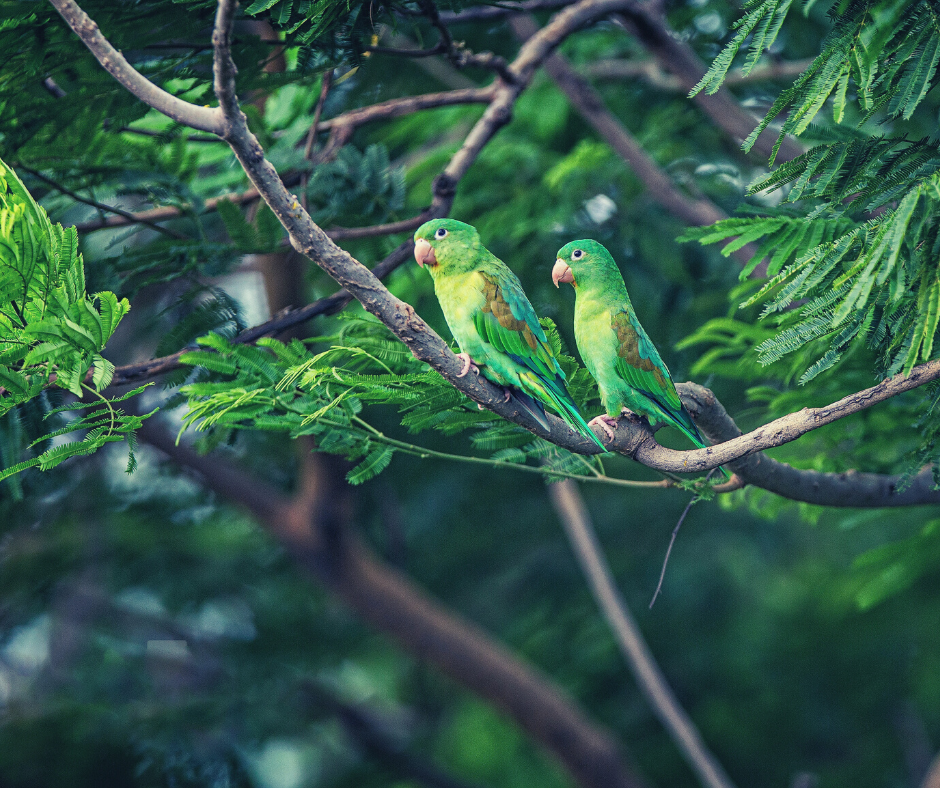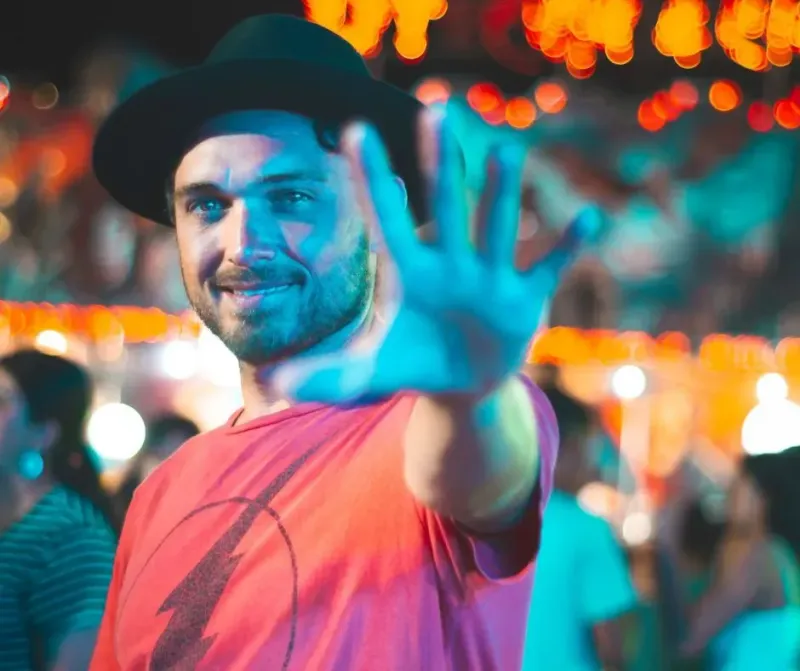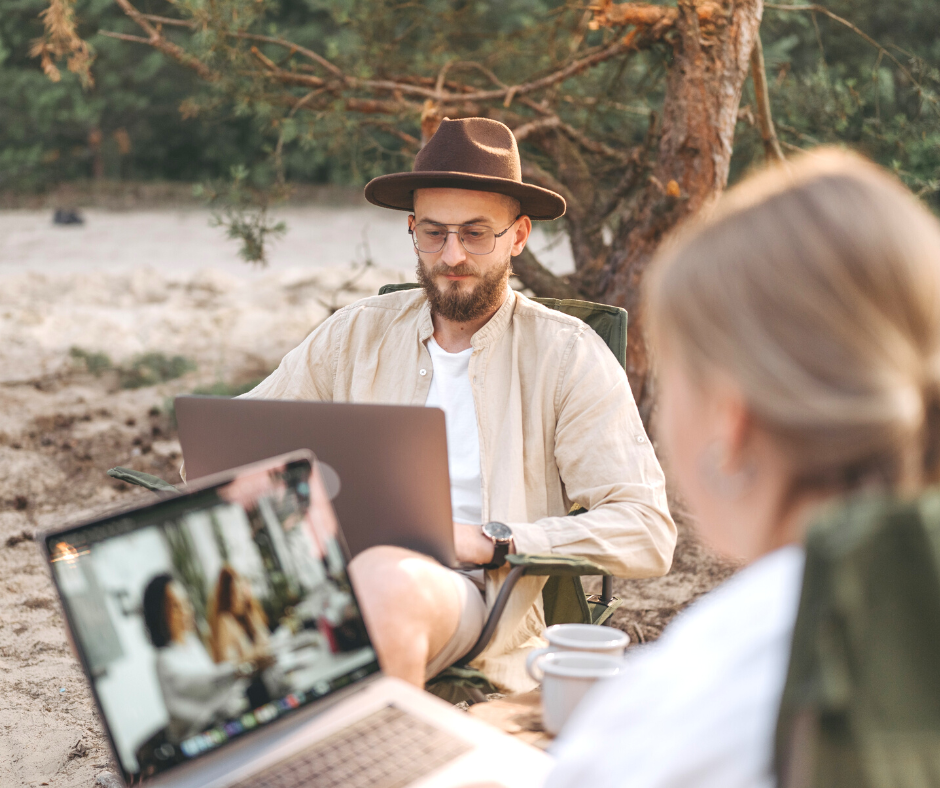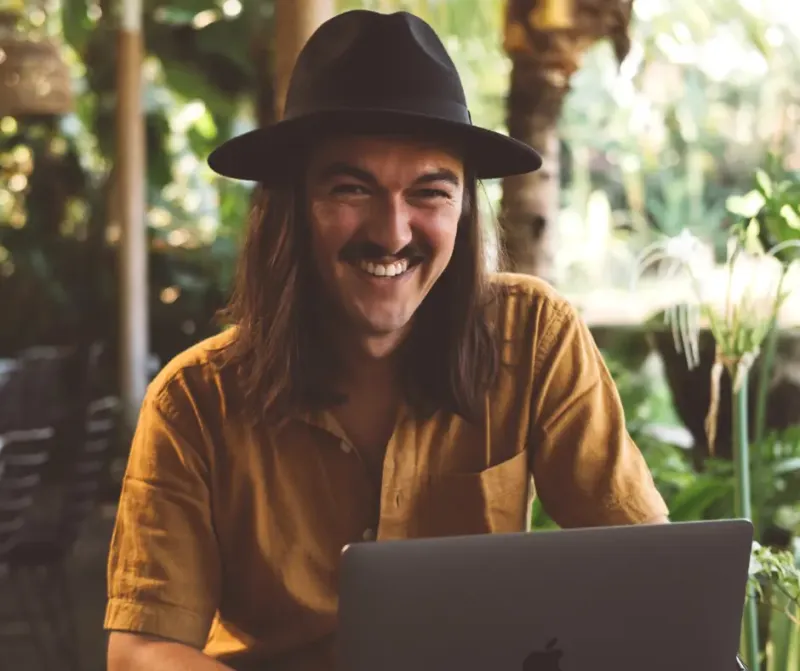Last updated 2023, January 10th: Wedged between Costa Rica and Honduras, and the Caribbean and the Pacific coast, Nicaragua is the less famous little brother of well-traveled Costa Rica and Honduras. Although it lacks in popularity, Nicaragua has dry forests, rainforests, and cloud forests, as well as river and lake landscapes, exotic beaches, and colorful marine life.
A growing community of digital nomads and long-term expatriates settle in places like Granada, or San Jose Del Sur - both chilled towns with art galleries, wine bars, tasty restaurants, and cute cafés. Come with me on a tour to Nicaragua, a wonderful alternative to the crowded hotspots of its neighboring countries.
🌱 Travel health insurance for Nicaragua
💡
Genki Explorer is a travel health insurance with worldwide cover. Monthly payment plans, and easy signup in less than 1 minute.
The table of content will be generated here
🇳🇮 Entry requirements for Nicaragua
- Valid visa: Most nationalities do not need to apply for a visa when traveling to Nicaragua. Check your nationality here.
- Covid test: Proof of a negative COVID-test result prior to your travels. Negative PCR-covid test within 48 hours before boarding or entering the country.
- Entry form: Before traveling, you need to fill out and submit an online entry form.
- Return ticket: As in some Latin American countries, you need to show proof of exit, in form of a return or onward ticket.
✈️ How to get to Nicaragua
- Plane: Major International Airports of Nicaragua are Managua International Airport (MGA), Bluefields Airport (BEF), and Puerto Cabezas Airport (PUZ). You can find direct flights from/to Nicaragua via the USA, Mexico, Cuba, or neighboring countries such as Panama, Guatemala, or Costa Rica. The most common way when traveling from Europe is a stopover in Atlanta, Houston, or Miami.
- Bus: From Costa Rica, you can enter Nicaragua by bus which is a cheap but time-consuming and comparatively exhausting way to enter the country.
🏡 How to find a place
- Airbnb: Plenty of availabilities are found on Airbnb and very common to book your stay through this platform.
- Hotels: For a short-term stay, you can also find good accommodation via agoda.com and booking.com. If you want to be close to a specific location, check hotels on Google Maps.
- Lodges and Jungle Reserves: Nicaragua is another natural beauty. Make sure to include a stay in one of the reserves and lodges close to nature.
🚌 Public transport in Managua
- Taxi: The good old way to get from A to B within a city is by using a taxi, which is fairly affordable in Nicaragua. A ride from the airport in Managua into the city should cost under 8 Euro. Make sure that you agree on a price before entering the car.
- Uber and co.: There is no Uber and co. in Nicaragua.
- Shuttle bus: A cleaner and more private form of transport is shuttle busses. In Managua, you find a bus terminal in Managua Mercado Huembes. A bus from Managua to Grenada costs between 20 and 40 Euros and the journey takes about 1 hour. Taking a taxi for the same trip costs around 60 - 100 Euros.
🏘 Where to stay in Managua
- Los Robles: Los Robles is an upscale expat neighborhood with several parks, restaurants, and the must-visit Metrocentro Mall. Here you can find a perfect infrastructure with small boutiques, shops, and cafés which makes the neighborhood very attractive for living.
- Las Colinas: The secure gated area is already home to many long-term expats who are looking for a way out of the chaotic and loud city life. The tranquil environment does not offer a lot of eateries or bar scenes, so you should have a fully furnished kitchen and household as well as transportation options such as a scooter or rental car.
🧑🏻💻 Where to work from in Managua
Coworking spaces
- Co.Work: The community-focused coworking is centrally located and features a workspace with private and common work areas, free refreshments, and modern equipment. A monthly membership within an open seating area, Access to conference rooms, free wifi, and all other member amenities costs 48 Euro.
🏘 Where to stay in Granada
- Due to its small size (population of below 150,000 ), there are no specific neighborhoods you should avoid. The town is located at lake Colcibolca and has only a small distance between the center and the beaches.
🧑🏻💻 Where to work from in Granada
Coworking Spaces
- Casa Bloom Coworking: The boutique coworking is a perfect melting pot of creatives, entrepreneurs, and digital nomads living and working in Granada. Besides the modern coworking atmosphere, the coworking offers an on-site spa, showers, green outdoor space, and a fully equipped kitchen. Monthly membership is available for 147 Euro per month.
Coffee shops
- Garden Café: The colonial-style building is an excellent location for enjoying good food and drinks, getting some work, and relaxing in one of the hammocks onwards.
🏘 Where to stay in San Juan del Sur
- San Juan del Sur is a small but popular beach community with coworking and coliving spaces, cafés, surf schools, and an overall beach atmosphere. San Juan del Sur can be reached by bus from Managua (3 hours) or Granada (2-3 hours depending on the type of transport). The town is small and you can find hotels and accommodations on Airbnb for every budget.
- Surf Lodges
- Coliving spaces: Outsite or Selina
🧑🏻💻 Where to work from in San Juan del Sur
Coworking Spaces
- the SPACE: Actually a hostel, the SPACE provides a coworking space that comes with hot desks, a snack bar, 50 MBPS internet speed, and indoor as well as outdoor seating.
🚊 How to travel around
- Local bus: The Chicken Busses are the most common way to travel around Nicaragua, they are pretty cheap but they are unreliable, don't follow fixed schedules, can be overcrowded, and are an easy target for pickpocketing. If you have time, and you don't mind that the journey takes a bit longer, it is a fun way. Stay alert and always keep an eye on your belongings.
- Scooter: Renting a scooter in Nicaragua is easy, however, if you are an experienced South East Asian traveler, you will not get a bike as cheap as in Cambodia, Thailand, or Vietnam. You will probably spend 15-20 Euro per day, or less if you rent for a week or longer.
- Car rental: Renting a car in Nicaragua is possible but not advisable as there is an increasing number of tourists reporting paying bribes to the police as they seek out rental cars for no reason. Instead, I would use the shuttle busses and rent scooters on the spot to get around.
- Plane: If you like Indiana Jones adventures, you can hop on a propellor plane of Air Nicaragua. The check-in procedure includes not just weighing your luggage but also yourself, as the tiny plane needs to be loaded with care. Your ticket will be a reusable plastic card, and because there is no cockpit partition, you can follow the pilots' conversations.
🎖Must see
- Antigua Catedral de Managua: This spectacular ruin is devastated inside, due to an earthquake in 1972. Even when visitors are not allowed to enter, it is a striking beauty and worth a visit if you are in town.
- Granada: One of the most popular destinations in Nicaragua is Granada. With its brightly painted Andalusian-style colonial homes, cobblestone streets, and beach life vibes, the city got more and more on the radar of digital nomads and other travelers.
- Parque Nacional Volcán Masaya: Those craters, described as the gates of hell are the most easily accessible active volcanoes in the country. It’s erupted 13 times within the last 30 years. Both volcanoes, Masaya and Nindiri, are active and have lava bubbles. The park entrance is around 7 km from Masaya and is an easy day trip option coming from Granada. The park also offers several hiking trails with incredible views over the lava fields and surrounding countryside. Local tour operators offer night tours up to the volcano. Prices are between 20 and 30 Euro.
- Lake Nicaragua: Lago di Nicaragua or Cocibolca is ranked 19th of the biggest lakes in the world and the largest rain-formed lake in the Americas. The freshwater lake drains into the Caribbean Sea.
- San Juan del Sur: If you are looking for a chilled and laid-back beach town, plan to visit San Juan del Sur. The small town is located on the Pacific coast and got popular among surfers and digital nomads. You find Selina and Outsite coliving facilities. San Juan del Sur is a 3-hour drive from Managua and about the same time from Grenada.
💡Good to know
- Internet: Average internet speed in Nicaragua is about 33 Mbps download and 13 Mbps upload.
- Socket: Type A, type B.
- Sim card: You can get a Tigo or Claro sim card directly at the airport upon arrival. Cool Tel is another provider but has less coverage than Claro and Tigo.
- Climate: The climate in Nicaragua is tropical and influenced by the dry season from November to April and the wet season from May to October. Temperature differences are between 21 and 27 degrees Celsius. Between late July and early August, the wet season gets a short interruption by a mini-dry season called Canícula.
- Safety: Nicaragua is one of the safest countries in Latin America, together with Chile, Argentina, Peru, Ecuador, Uruguay, and Paraguay. However, the last years have slowed down foreign investment and tourism, as the country faces domestic unrest. Citizens demonstrate against the current government and the situation is not solved yet.
- Digital nomads Granada: Just an hour's drive from the capital Managua, you find Granada, a small town with a small digital nomad scene, mainly based around Selina Coliving and Coworking space. Alternative workplaces are TASTE and Encuentros. Granada is a small laid-back town, located next to Lago Cocibolca. The cost of living is around 1.500 USD per month including everything. Rent is inexpensive and it is easy to work from the many coffee shops or restaurants. The nightlife scene is small but you find some live music, bars, and pubs to hang out in after work.
- Digital nomads San Juan Del Sur: Another popular location among digital nomads, and surfers in San Juan Del Sur, a beach town with excellent surf spots and a chilled beach vibe. Already discovered by Selina, yes, you will find a Coliving space in San Juan Del Sur, although the town and Nicaragua as a whole are not overly populated - yet - by the remote working crowd compared to Nosara in Costa Rica.
- English: Nicaragua was once part of the British Empire and English was thought in schools and is widely spoken today also because the country was a big US military base in the mid of the last century.
- Cost of living: Affordable, authentic, and safe - this is how I would describe Nicaragua, which is a serious alternative to neighboring Costa Rica, which is heavily traveled by retirees, long-term expats, seasonal holiday takers, and digital nomads. Nicaragua is the more affordable Central American country and is similarly beautiful.
- Cash is king: Maybe in Managua, you can find shops and restaurants that take cards, but as more remote you travel, as less you will find this payment option. Always have some cash with you.
- Street names: Getting around in Nicaragua gets hard when it comes to addresses, as the country doesn't use street names. It is common that someone refers to a place as "4 blocks north of here, turn east and follow the road for two more blocks" etc. - so better you get familiar with the cardinal points.
- Surfing: Good waves are found in Playa Maderas and Playa Majagual in San Jose Del Sur. The best time for surfing is the months of July and August. If you prefer to be a little bit more off the beaten track, try out Jiquilillo beach in the northern part of Nicaragua.
- Nature: Nicaragua has 24 active volcanoes, countless lakes, rivers, and lagoons, which give the country the nickname Country of the Lakes and Volcanoes. The country makes up 7% of the world's biodiversity, and 70 different ecosystems coexist here. You can still find untouched rainforests in Nicaragua, tropical dry forests, as well as evergreen cloud forests. About 700 different bird species can be found in Nicaragua, together with wildlife such as monkeys, sloths, whales, iguanas, turtles, and cats.
- Big country: Did you know that Nicaragua is the biggest country in Central America with a population of 6.7 million people? It borders Honduras and Costa Rica. Lake Nicaragua is the biggest freshwater lake in Central America.
- Food: Nicaraguan cuisine is influenced by Spanish, Creole, and indigenous Native American food. National dishes are Gallo Pinto, Arroz de Los Valenciana, or Vigorón. Dishes on the Caribbean side are often made of seafood and coconut, whereas the Pacific side dishes come with beef, poultry, corn, and local fruit and vegetable.
🚧 What to avoid
- Shady areas: In the capital Managua, areas like Rene Schick and Jorge Dimitrov should be avoided due to gang violence. Additionally, the Zona Rosa district is a red-light district that is known for robbery.
- Highway robbery: The routes between Managua to Leon and Tipitapa to Masaya have been repeatedly hotspots for armed highway robbery targeting rental cars. As mentioned above, you might want to avoid renting a car in Nicaragua.
- Talking about politics: Censorship in Nicaragua is a big problem involving killed students and missing teachers. The 2018 demonstrations against the corrupt government have been brutally stopped by the police. Keep your wits about politics for yourself and don't get locals involved in political discussions.
🚴🏻♀️ How to stay healthy
Stay active
- Hiking in San Jose Del Sur: San Jose Del Sur offers a wide range of hikes, for example, to Playa el Toro or to the Lighthouse Fortress.
- Hiking in Miraflor National Park: Starting in Esteli, you need to drive 30 km to Miraflor, you can take a bus to get there. There are several trails you can choose from to explore the cloud forests of Miraflor National Park.
- Hiking Telica volcano: When staying in Leon, you can climb the Telica volcano either as a day trip, a sunset tour, or an overnight trek including stars and sunrise over the crate.
- Watersports: Good waves are found in Playa Maderas and Playa Majagual in San Jose Del Sur. The best time for surfing is the months of July and August. If you prefer to be a little bit more off the beaten track, try out Jiquilillo beach in the northern part of Nicaragua.
- Running: The long-stretched beaches in Nicaragua invite you to take long beach walks, do morning runs, and play beach volleyball, or frisbee.
Health Risks
- Water Quality: You should not drink tap water in Nicaragua.
- Air Quality: The air quality in Nicaragua is good.
💡
Where to travel next? Destinations close to Nicaragua.
Costa Rica for nomads
[Updated 2022, December 16th] Pura Vida Costa Rica! The small tropical country in Central America is home to the happiest people on the planet, to more than 500,000 wildlife species, 900 types of birds, and the most colorful aquatic habitat - the temporarily home to migrating humpback whales, hammer…
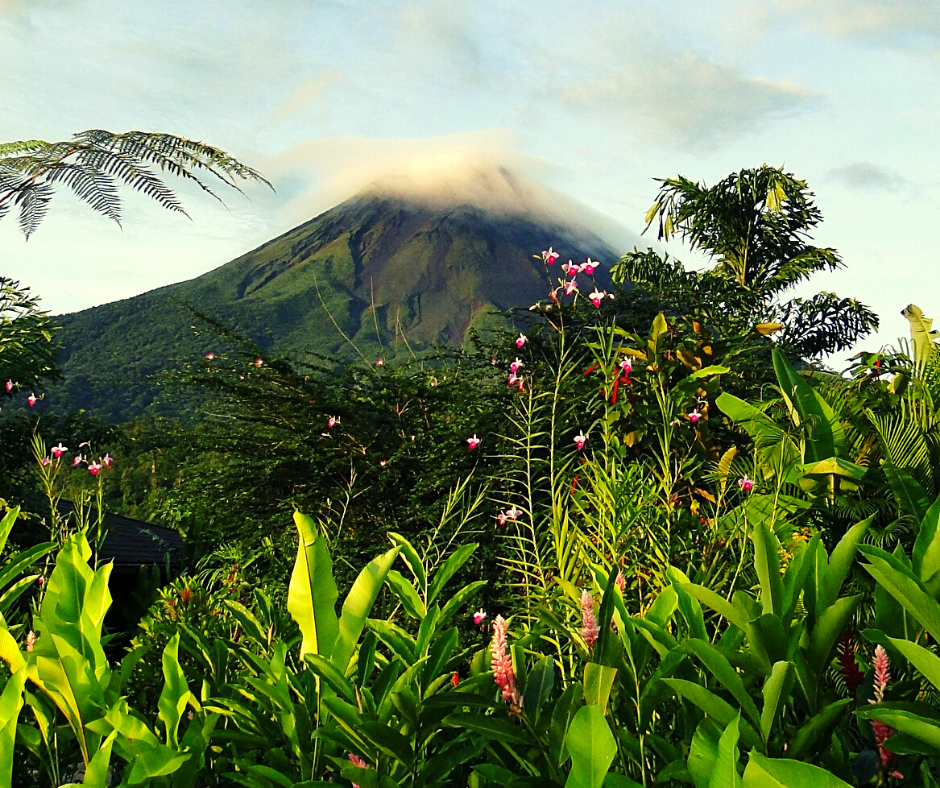
Honduras for nomads
Last updated 2023, January 26th: With over 80% mountainous landscape, Honduras offers jungle, ancient Maya ruins, a turbulent history, and rich culture. The beautiful tropical island paradise of Roatan in the Caribbean Sea is one of the most popular tourist destinations in the country. If you haven…

Mexico for nomads
Last updated 2022, November 30th: I am sure you are aware of the fact that Mexico has been open to travelers the entire time of the pandemic. No surprise that Mexico became pretty popular among holidaymakers, escapists, and digital nomads. We collected information to make your journey smooth and eas…



